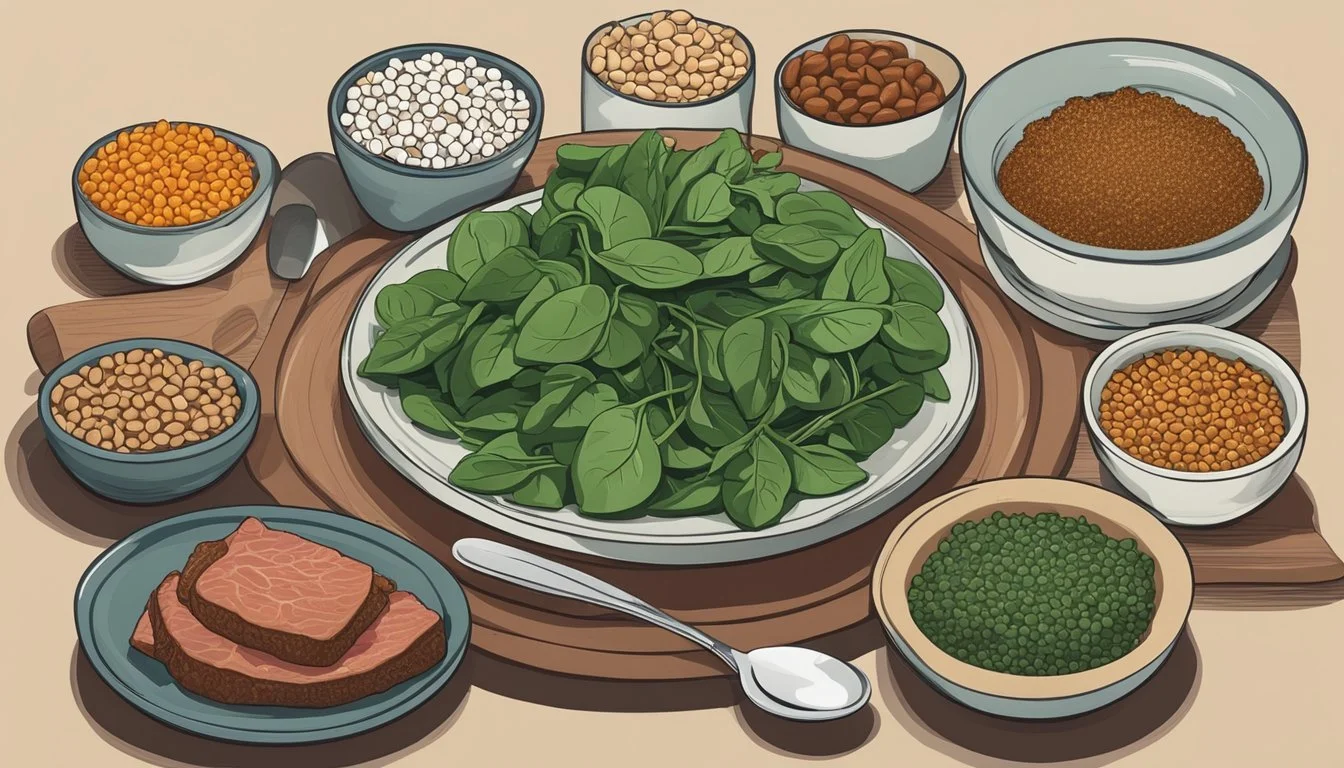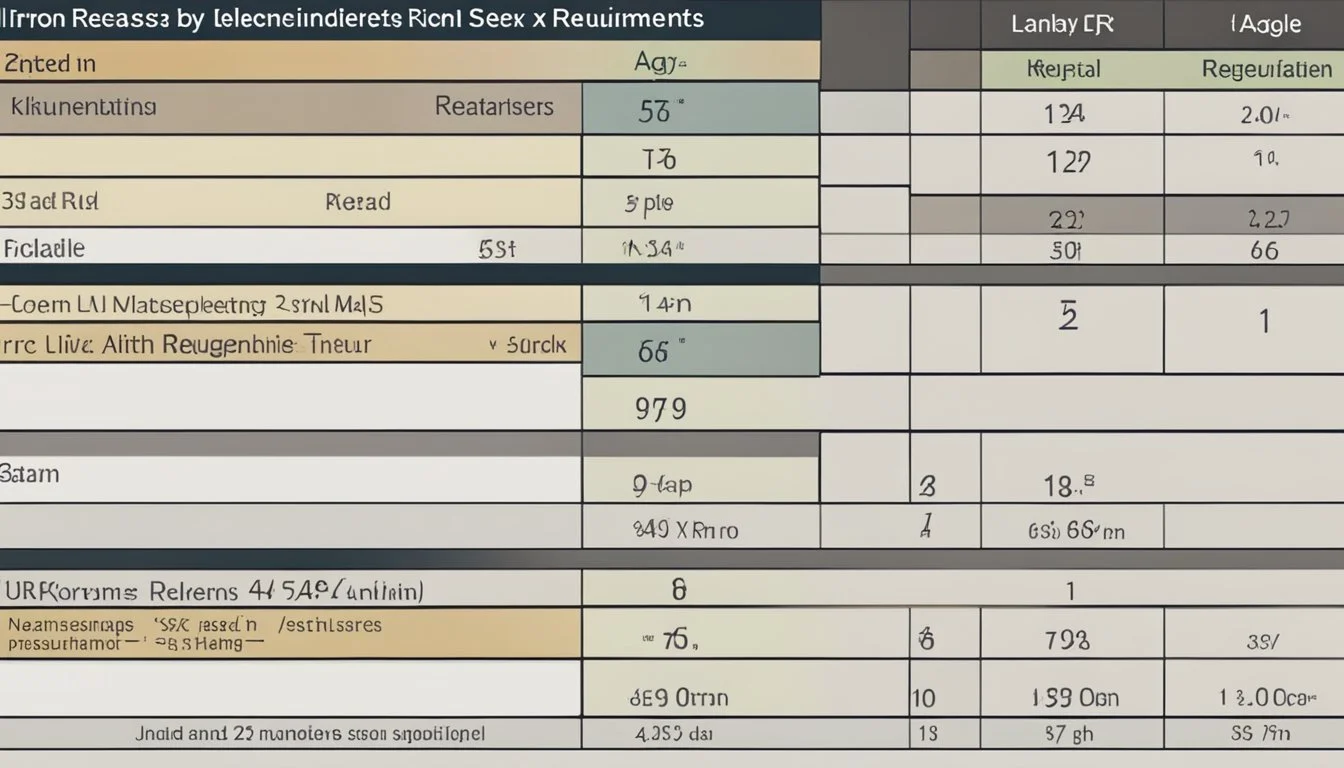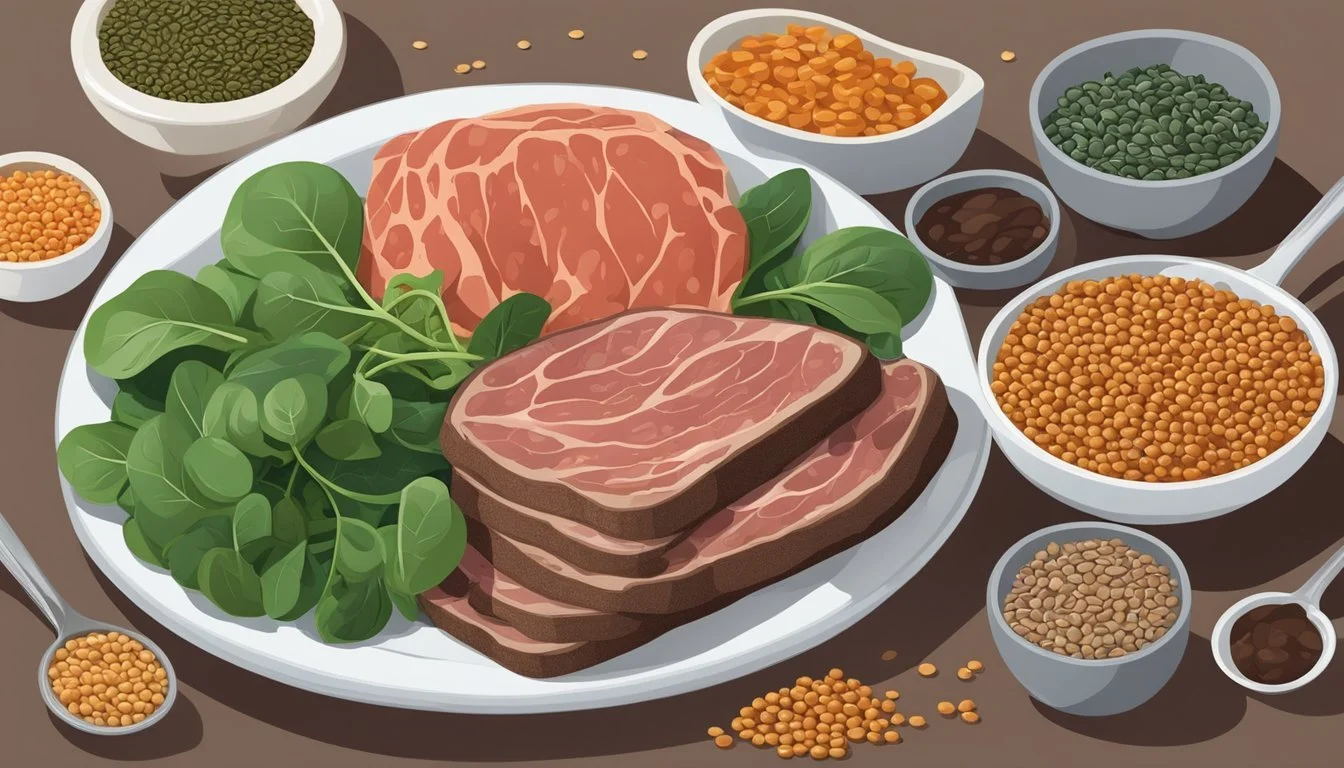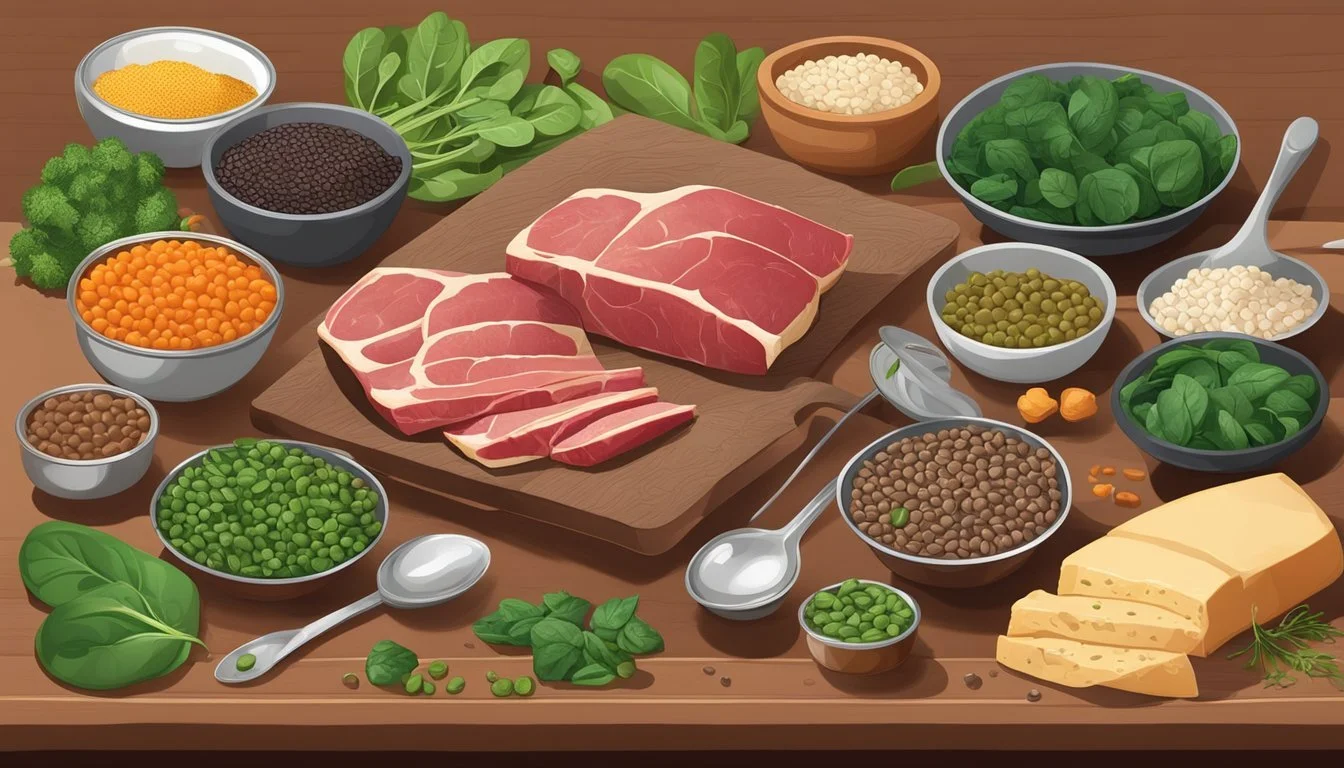How Much Iron Should You Include in Your Diet
Daily Intake Recommendations
Iron is a vital mineral essential for maintaining healthy blood and various bodily functions. It is a key component of hemoglobin, the protein in red blood cells that transports oxygen from the lungs to the rest of the body. Iron deficiency can lead to anemia, a condition characterized by fatigue and weakness. Therefore, it's important for individuals to ensure their diet includes an appropriate amount of iron to meet their body’s needs.
The recommended daily intake of iron varies based on age, sex, and life stage. For example, children between the ages of 1 and 3 require 7 milligrams of iron daily, which increases to 10 milligrams daily between the ages of 4 and 8. Adults typically need between 8 to 18 milligrams, with higher requirements for menstruating women to compensate for loss during periods. Pregnant women require even more iron to support fetal development and should consult healthcare providers for specific recommendations.
Incorporating iron-rich foods into one's diet is the most effective way to meet daily iron requirements. Foods such as red meat, poultry, seafood, and fortified cereals are excellent sources of heme iron, which is more readily absorbed by the body. Nonheme iron sources include beans, lentils, and dark leafy greens, though the iron from these plant-based sources is less efficiently absorbed. Pairing these foods with vitamin C-rich foods like tomatoes and citrus fruits can enhance iron absorption. Regularly including a variety of these foods in meals will help maintain adequate iron levels in the body.
The Role of Iron in the Body
Iron is an essential mineral that supports various vital functions within the body. It is crucial for the production of hemoglobin, muscle development, and maintaining good health.
Oxygen Transport and Hemoglobin
Iron is the main component of hemoglobin, the protein in red blood cells responsible for carrying oxygen from the lungs to the rest of the body. Without adequate iron, the body can't produce enough healthy red blood cells, leading to a condition known as anemia.
Cellular Function and Muscle Development
Beyond hemoglobin, iron is also essential for muscle development. It helps in the proper functioning of cells and tissues. Moreover, energy production at the cellular level requires iron, as it assists in the metabolism of enzymes that are pivotal in energy synthesis.
Iron and Overall Health
Sufficient iron levels are crucial for supporting immune system health. It plays a defensive role by protecting the body against pathogens and enhancing proliferation of immune cells. It's also important for growth in infants and children, and low levels might affect cognitive and physical development. Additionally, iron is involved in the function of hormones and the health of various organs within the body.
Iron Requirements by Age and Sex
The National Institutes of Health provides guidelines on the daily iron requirements that vary by age and sex. Iron is essential for growth, development, and overall health.
Infants and Children
Infants:
0 to 6 months: 0.27 milligrams (mg) per day (adequately supplied by breast milk or iron-fortified formula).
7 to 12 months: 11 mg per day to support rapid growth.
Children:
1 to 3 years: 7 mg daily.
4 to 8 years: 10 mg daily.
As children transition from infancy to school age, their iron needs increase to sustain their growing bodies and cognitive development.
Adult Men and Women
Men:
19 years and older: 8 mg per day.
Women:
19 to 50 years: 18 mg daily.
50 years and older: 8 mg per day.
For adults in the United States, the daily value for iron adjusts with age and sex to reflect differing needs. Women of childbearing age require more iron compared to adult men due to menstrual losses.
Pregnant and Lactating Women
Pregnant Women:
All ages: 27 mg per day.
Lactating Women:
18 years and under: 10 mg per day.
19 years and older: 9 mg per day.
Pregnant women have increased iron needs to support fetal development and blood volume expansion. Lactating women have slightly decreased iron requirements postpartum.
Identifying and Understanding Iron Deficiency
Iron plays a pivotal role in various bodily functions, notably in hemoglobin production, which is crucial for oxygen transport in the blood. Deficiency of this mineral can lead to anemia and a range of symptoms affecting overall health. This section explores the symptoms, implications of iron deficiency anemia, and the populations most at risk.
Symptoms of Iron Deficiency
Individuals with iron deficiency typically exhibit a variety of symptoms that include:
Fatigue and general weakness
Pale skin tone
Shortness of breath
Cold hands and feet
Rapid or irregular heartbeat
Dizziness or lightheadedness
Iron Deficiency Anemia
Iron deficiency anemia develops when the body's iron shortage is severe enough to reduce the production of hemoglobin, the protein in blood that carries oxygen. Consequently, symptoms may amplify, leading to greater fatigue and even chest pain.
High-Risk Groups and Iron Deficiency
Certain groups are at a heightened risk of developing iron deficiency:
Vegetarians may not ingest sufficient heme iron, the form most easily absorbed by the body, as it is primarily found in animal products.
Menstruating women lose blood monthly, and with it, iron, hence may require a higher intake than others.
Frequent blood donors have a higher risk as well due to the loss of iron with each donation.
Consultation with a doctor is advisable for anyone suspecting iron deficiency to ensure proper diagnosis and treatment.
Dietary Sources of Iron
The human body requires iron to perform essential functions, notably the creation of red blood cells. Iron intake can be categorized into two forms: heme iron, which is readily absorbed by the body, and nonheme iron, which requires certain dietary factors for optimal absorption.
Heme Iron Sources
Heme iron is predominantly found in animal products, such as:
Meat: especially red meat like beef and lamb
Poultry: such as chicken and turkey
Seafood: including fish and shellfish
The iron in these foods is incorporated into hemoglobin, which transports oxygen in the blood.
Nonheme Iron Sources
Nonheme iron is primarily derived from plant sources and iron-fortified foods. While this type of iron is not absorbed as efficiently as heme iron, it still contributes to iron intake. Important sources include:
Beans: such as lentils and peas
Nuts: a variety of nuts, including almonds and cashews
Leafy Greens: spinach and kale
Fortified Cereals: cereals and breads enriched with iron
Combining nonheme iron sources with vitamin C-rich foods can enhance absorption.
Enhancing Iron Absorption
The efficiency of iron absorption is crucial to maintaining adequate iron levels in the body. One can enhance iron absorption by incorporating specific foods and being mindful of factors that may inhibit it.
Foods That Increase Iron Absorption
Vitamin C: One of the most significant enhancers of iron absorption is vitamin C. This nutrient effectively increases the absorption of nonheme iron, the form of iron predominant in plant-based foods.
Examples of vitamin C-rich foods include:
Citrus fruits (oranges, grapefruits)
Tomatoes
Broccoli
Bell peppers
Pairing these foods with iron-rich meals can greatly enhance the body's ability to absorb nonheme iron more effectively.
Factors That Inhibit Iron Absorption
Calcium: Although essential for bone health, calcium can compete with iron for absorption when consumed in high amounts at the same time.
Tannins and Polyphenols: Found in tea and coffee, these compounds can bind to iron, making it less available for absorption. The impact is mainly on nonheme iron absorption.
Fiber: A high-fiber diet is generally healthy but can decrease iron absorption due to fiber's binding properties, which can make iron less accessible.
By understanding and adjusting dietary intake with these factors in mind, one can optimize the absorption of iron and prevent potential deficiencies.
Iron in Special Diets
In special diets, particularly among vegetarians and vegans, maintaining adequate iron levels can be a challenge due to the absence of meat, which is a major source of easily absorbed heme iron. Individuals following these diets need to carefully plan their iron intake to avoid deficiency.
Iron Intake for Vegetarians and Vegans
Vegetarians and vegans obtain iron from plant sources, which contain non-heme iron. This form of iron is not absorbed as efficiently as heme iron found in animal products. Therefore, vegetarians and vegans should aim for an iron intake that is 1.8 times higher than the general population to account for the lower absorption rate of non-heme iron. For adults, this translates to approximately 32.4 mg of iron per day for vegetarian women and people assigned female at birth (AFAB), and approximately 14.4 mg per day for vegetarian men and those assigned male at birth (AMAB).
Plant Sources: Include lentils, beans, tofu, quinoa, dark chocolate, fortified cereals, nuts, seeds, and leafy greens.
Vitamin C: Enhances iron absorption. Consuming foods rich in vitamin C, such as oranges, strawberries, and bell peppers, alongside iron-rich foods is beneficial.
Managing Iron Levels with Dietary Choices
Making informed dietary choices is key to managing iron levels, especially for those on special diets. Consuming a variety of iron-rich foods throughout the day can help maintain adequate levels. For individuals who struggle to meet their iron needs through diet alone, iron supplements may be necessary. However, they should consult with a healthcare provider before starting any supplements to determine the appropriate dosage and to avoid potential side effects of excess iron intake.
Iron Supplementation: May be advised for those who cannot meet their iron needs through diet alone.
Monitoring Iron Levels: Regular blood tests can help monitor iron levels and adjust dietary intake or supplementation as needed.
Individuals with specific health conditions or dietary restrictions should consult a healthcare professional for personalized advice on iron supplementation and dietary adjustments to ensure optimal health.
Iron Supplements and Fortified Foods
Iron is a vital mineral in the diet, and when its intake is not met through food sources alone, individuals may need to consider iron supplements or choose iron-fortified foods. This section explores when supplements might be necessary and how to select iron-fortified foods effectively.
When to Consider Iron Supplements
Individuals may need to take iron supplements when they are experiencing iron deficiency or iron-deficiency anemia. These conditions can often be diagnosed by a healthcare provider through a simple blood test. Supplementing iron is crucial for those who cannot get an adequate amount from their diet alone.
Symptoms of Iron Deficiency: Fatigue, weakness, pale skin, and other signs of anemia.
At-Risk Groups: Women, especially pregnant and menstruating women, infants, and frequent blood donors.
Consultation: Always consult with a healthcare provider before starting any supplement to avoid overconsumption, which can be harmful.
Choosing Iron-Fortified Foods
Iron-fortified foods are products to which iron has been added. They are an important part of managing iron levels, especially in populations at risk of deficiency. Examples include:
Cereals and Breads: Look for "iron-fortified" on the label, indicating that the mineral has been added.
Enriched Grains: These often have iron added back after the refining process.
List of Common Iron-Fortified Foods:
Breakfast cereals
White and whole wheat bread
Pasta
Rice
When choosing these foods, checking the nutrition facts label is essential to ensure that the iron content meets your dietary needs. Combining iron-fortified foods with a source of vitamin C, such as oranges or strawberries, can enhance iron absorption.
Potential Issues with Excess Iron
Maintaining appropriate levels of iron in the diet is critical, as an excess can lead to serious health complications. These complications are typically the result of two major issues: iron overload and hemochromatosis and side effects from consuming too much iron.
Iron Overload and Hemochromatosis
Iron overload occurs when the body absorbs more iron than it needs, leading to an accumulation that the body cannot properly eliminate. Hemochromatosis, a genetic disorder causing chronic iron overload, results in excess iron storage in organs such as the liver, heart, and pancreas. Over time, this iron build-up can cause organ damage and lead to conditions like liver disease, cardiac issues, and diabetes.
Symptoms: Individuals might initially experience fatigue, joint pain, abdominal pain, and skin changes.
Hormonal Impact: Excess iron can disrupt the endocrine system, affecting hormones and potentially leading to complications in reproductive health.
Side Effects from Too Much Iron
An acute intake of iron that is significantly over the recommended amount can result in toxicity and accompanying side effects. These symptoms can include gastrointestinal distress, such as constipation, nausea, stomach pain, and diarrhea.
Gastrointestinal Symptoms:
Constipation: Difficulty with bowel movements, often accompanied by abdominal discomfort.
Nausea and Stomach Pain: These symptoms can impact appetite and overall well-being.
Diarrhea: Frequent loose or watery bowel movements, which can lead to dehydration.
Excess iron intake should be carefully monitored as chronic iron overload can lead to severe health issues. It is advised to follow recommended dietary guidelines and consult healthcare providers for personalized advice, especially for individuals with genetic predispositions like hemochromatosis.
Consulting Healthcare Professionals
Managing iron intake is critical for maintaining optimal health, and healthcare professionals play a key role in this process. They provide necessary medical advice, diagnose potential iron-related issues, and recommend dietary changes or supplements as needed.
When to See a Doctor
Individuals should consider visiting a doctor if they experience symptoms indicative of iron deficiency or anemia, such as chronic fatigue, weakness, pale skin, irregular heartbeat, or shortness of breath. Healthcare professionals can evaluate these symptoms, and when appropriate, suggest blood tests to measure ferritin levels, the iron-containing protein that indicates the body's iron stores.
Testing for Iron Deficiency and Overload
Doctors may prescribe iron tests for patients showing symptoms of deficiency or to monitor the iron levels in those already diagnosed with anemia. The following blood tests are commonly administered:
Serum Ferritin Test: Measures the amount of ferritin in the blood.
Serum Iron Test: Determines the level of iron in the blood.
Total Iron-Binding Capacity (TIBC): Assesses the blood's capacity to bind iron.
Transferrin Saturation: Percentage of transferrin that is saturated with iron.
These tests provide valuable insights, allowing the doctor to offer tailored medical advice. If an individual’s diet is suspected to be the cause of imbalance, the healthcare professional may recommend dietary adjustments to ensure adequate iron intake.






